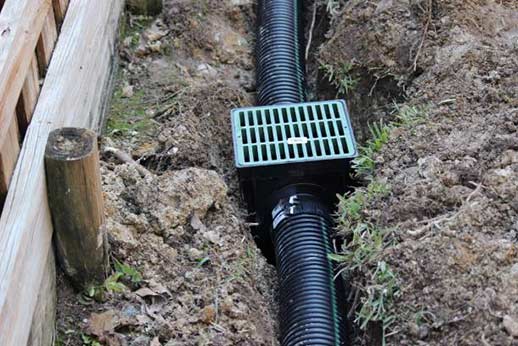
Installing a French drain can be a wise investment that saves you from costly water damage and foundation issues in the long run. However, before embarking on this project, it’s crucial to have a clear understanding of the costs involved. In this article, we will break down the different expenses you can expect when installing a French drain. By gaining insight into the cost breakdown, you will be better prepared to make informed decisions and budget effectively for this important drainage solution.
Understanding French Drains
A French drain is a trench filled with gravel or rock encasing a perforated pipe that redirects groundwater away from your property’s foundation or other vulnerable areas. This drainage system prevents water from accumulating around your home, preventing water damage, damp basements, and other issues caused by excess moisture.
Factors Affecting the Cost
Several factors influence the overall cost of installing a French drain. By considering these factors, you can assess the potential expenses and plan your budget accordingly. Let’s explore the most significant elements impacting the installation costs:
Length and Depth of the Drainage System
The length and depth of the French drain play a vital role in determining the overall cost. The longer and deeper the drain needs to be, the more materials and labor will be required. Additionally, the complexity of the terrain and soil conditions can impact the excavation process, potentially increasing the installation expenses.
Gravel Type and Quantity
The type and quantity of gravel used in the French drain installation can affect the total cost. Different types of gravel, such as crushed stone or river rock, have varying costs per cubic yard. The amount of gravel needed will depend on the width and depth of the drain, as well as the length of the trench.
Perforated Pipe Material
The material of the perforated pipe used in the French drain system can also impact the cost. PVC (polyvinyl chloride) pipes, commonly used in French drains, are generally more affordable compared to other materials like HDPE (high-density polyethylene). However, the specific requirements of your project and the local availability of materials may influence the price.
Labor Costs
The cost of labor will vary depending on factors such as location, local labor rates, and the complexity of the installation. Excavating the trench, laying the gravel, placing the pipe, and backfilling the trench all require skilled labor, which contributes to the overall cost. It’s essential to hire experienced professionals to ensure the French drain is installed correctly.
Additional Components
Additional components that may be required for your French drain project can add to the overall cost. These components may include fittings, connectors, catch basins, or sump pumps, depending on your specific drainage needs and existing infrastructure.

Sample Cost Breakdown
While the actual cost of installing a French drain can vary widely depending on the factors mentioned above, here is a sample cost breakdown for a better understanding:
- Excavation and labor: $500 – $1,500
- Gravel: $50 – $100 per cubic yard
- Perforated pipe: $0.50 – $2 per linear foot
- Additional components: $100 – $500
- Total cost: $1,000 – $3,000+
Please note that these figures are for illustrative purposes only and are not meant to represent actual costs. It’s essential to obtain accurate quotes from reputable contractors based on your specific project requirements.
In Summary
Installing a French drain is an effective way to protect your property from water damage and foundation issues. While the cost can vary depending on several factors, gaining insight into the cost breakdown will help you plan and budget effectively. By understanding the expenses associated with excavation, materials, labor, and additional components, you can make informed decisions and ensure the successful installation of your French drain.

